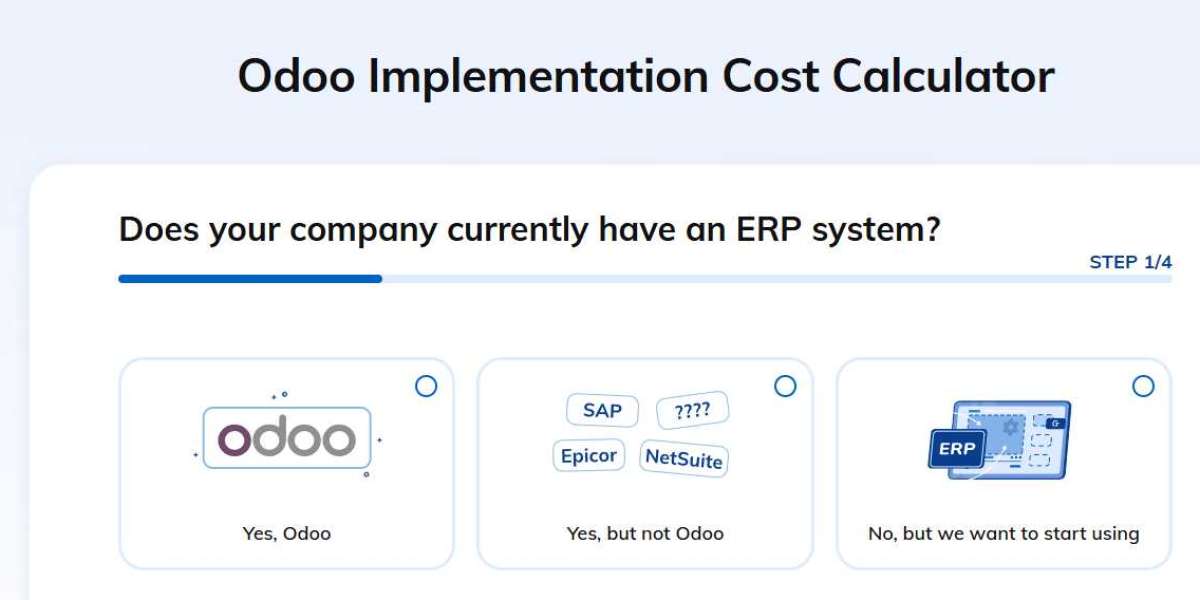In today’s competitive business landscape, implementing a powerful and flexible ERP system like Odoo can significantly enhance operational efficiency, data visibility, and decision-making across departments. However, the cost of Odoo implementation can vary dramatically based on the specific needs of different industries.
Retail, manufacturing, and healthcare—three major sectors—have distinct operational requirements, regulatory landscapes, and integration challenges. Understanding how these variables affect the Odoo implementation cost can help organizations plan better and avoid unpleasant financial surprises.
Understanding Odoo Implementation Cost Components
Before we dive into industry-specific breakdowns, it's essential to understand the major components of the cost of Odoo implementation:
Licensing Fees – Depending on the number of apps and users.
Customization – Tailoring modules to specific workflows or business processes.
Integration – Connecting Odoo with third-party platforms (e.g., CRMs, POS systems, or EMRs).
Data Migration – Transferring legacy data into Odoo safely and accurately.
Training – Ensuring end-users can use the system effectively.
Support and Maintenance – Ongoing technical support, system updates, and issue resolution.
With this foundation in mind, let’s look at the cost expectations by industry.
Odoo Implementation Cost in the Retail Industry
Key Business Needs
Retail businesses typically require robust support for:
Point of Sale (POS) integration
Inventory and warehouse management
Multi-store and multi-channel sales
Customer relationship management (CRM)
E-commerce platform integrations (e.g., Shopify, Magento)
Cost Drivers in Retail
High Volume Transactions: Odoo needs to handle large daily transactions, which may require additional performance tuning or hosting capabilities.
Multi-Channel Integration: Integrating Odoo with Amazon, eBay, and other marketplaces can increase customization and integration costs.
Customer Loyalty CRM: Custom modules for loyalty programs or tailored marketing automation tools may also add to the total odoo implementation cost.
Typical Odoo Implementation Cost for Retail
| Business Size | Estimated Cost (USD) |
|---|---|
| Small Retailer (1–5 users) | $10,000 – $20,000 |
| Medium Business (5–20 users) | $25,000 – $50,000 |
| Large Retail Chain (20+ users) | $60,000 – $120,000+ |
Cost Optimization Tip
Retail businesses can reduce the cost of Odoo implementation by using pre-built retail modules and opting for cloud hosting rather than on-premise deployments.
Odoo Implementation Cost in the Manufacturing Industry
Key Business Needs
Manufacturers have complex workflows that may require:
Bill of Materials (BoM)
Work Orders and Production Planning
Inventory and Warehouse Control
Supply Chain and Vendor Management
Quality Control and Traceability
Cost Drivers in Manufacturing
Advanced Customization: Most manufacturers require deep customization of the Manufacturing and Inventory modules.
Production Scheduling: Features like MRP II (Manufacturing Resource Planning) or AI-assisted scheduling significantly increase the odoo ERP implementation cost.
Machine Integration: Connecting factory machinery or IoT devices to Odoo can be expensive and time-consuming.
Compliance Needs: For industries like automotive or aerospace, regulatory compliance (e.g., ISO standards) adds complexity and cost.
Typical Odoo Implementation Cost for Manufacturing
| Business Size | Estimated Cost (USD) |
|---|---|
| Small Workshop (1–5 users) | $15,000 – $30,000 |
| Mid-Size Manufacturer (5–30 users) | $35,000 – $75,000 |
| Large Factory Operation (30+ users) | $80,000 – $200,000+ |
Cost Optimization Tip
Use phased implementation—start with core modules (Inventory, MRP, and Purchasing), then expand to CRM, HR, or Accounting later. This can help distribute the odoo implementation cost more evenly.
Odoo Implementation Cost in the Healthcare Industry
Key Business Needs
Healthcare institutions demand high data security, compliance, and seamless integration with:
Electronic Medical Records (EMR)
Patient Scheduling
Laboratory and Pharmacy Systems
Billing and Insurance Claims
Staff Rostering and HR
Cost Drivers in Healthcare
HIPAA/GDPR Compliance: Extra measures are needed to meet data protection regulations, which can raise the cost of Odoo implementation.
EMR Integration: Connecting Odoo with existing Electronic Health Records systems may require extensive API work and data migration.
Patient Portals: Custom portals for appointments, document sharing, or e-prescriptions often need development from scratch.
Audit and Security: Detailed access controls, audit trails, and encryption significantly increase the odoo ERP implementation cost in healthcare.
Typical Odoo Implementation Cost for Healthcare
| Organization Type | Estimated Cost (USD) |
|---|---|
| Small Clinic (1–5 users) | $20,000 – $35,000 |
| Medium Facility (5–25 users) | $40,000 – $90,000 |
| Hospital or Health Network (25+ users) | $100,000 – $250,000+ |
Cost Optimization Tip
Consider using existing healthcare modules or partnering with Odoo-certified partners who have healthcare-specific experience to reduce customization costs.
Comparing Costs Across Industries
Here’s a summarized comparison of Odoo implementation cost ranges across the three sectors:
| Industry | Small Business | Medium Business | Large Enterprise |
|---|---|---|---|
| Retail | $10k–$20k | $25k–$50k | $60k–$120k |
| Manufacturing | $15k–$30k | $35k–$75k | $80k–$200k |
| Healthcare | $20k–$35k | $40k–$90k | $100k–$250k |
As the table shows, healthcare implementations are generally the most expensive due to compliance and integration needs, while retail can often be the most cost-effective with the help of out-of-the-box Odoo features.
Additional Factors That Affect the Cost of Odoo Implementation
1. Deployment Model: On-Premise vs. Cloud
On-premise requires higher upfront investment for servers, IT support, and security.
Cloud deployment offers flexible pricing models but may involve ongoing subscription fees.
2. Number of Users and Modules
More users mean higher license fees and training needs. Similarly, each additional module (CRM, HR, Accounting, etc.) adds to the cost.
3. Geographic Location
Developer and consultant rates vary by region. North American and Western European providers charge significantly more than their Eastern European or South Asian counterparts.
4. Implementation Partner
Choosing the right partner is critical. Certified Odoo partners often charge more but ensure faster, more reliable deployment with fewer errors.
How to Estimate Your Odoo ERP Implementation Cost
To estimate your project budget, follow these steps:
Define your core needs. List must-have features and modules.
Consult with Odoo experts. Get multiple quotes from certified partners.
Start small. Begin with a Minimum Viable Product (MVP) to reduce risk.
Plan for long-term costs. Include maintenance, upgrades, and user training.
Final Thoughts
There is no one-size-fits-all answer when it comes to the cost of Odoo implementation. Each industry—retail, manufacturing, and healthcare—brings its own complexities and cost drivers. Understanding these nuances is critical to preparing a realistic budget and choosing the right implementation strategy.
Whether you're a retail startup looking to streamline inventory or a hospital aiming for better patient management, Odoo offers the scalability and modularity to support your growth. But to keep the odoo ERP implementation cost under control, strategic planning and the right implementation partner are essential.
If you're considering deploying Odoo in your organization, reach out to a certified expert to assess your business’s needs and develop a tailored implementation roadmap.








